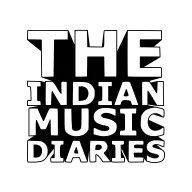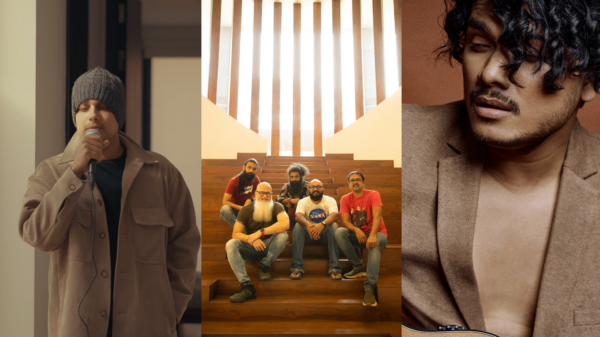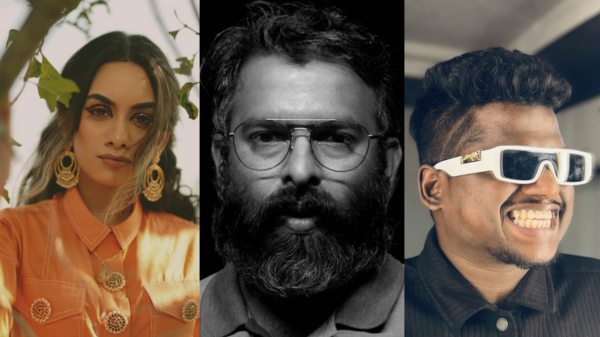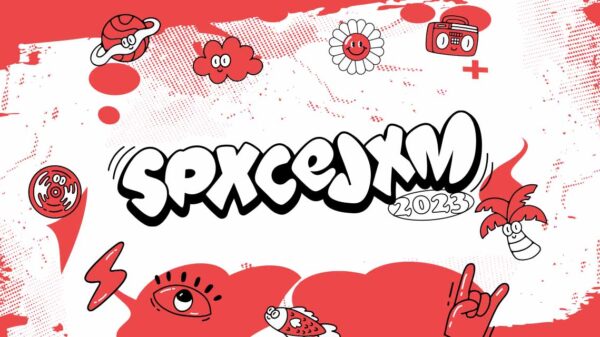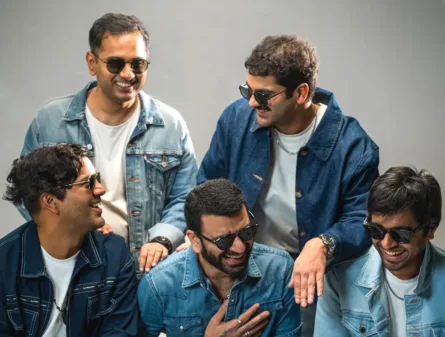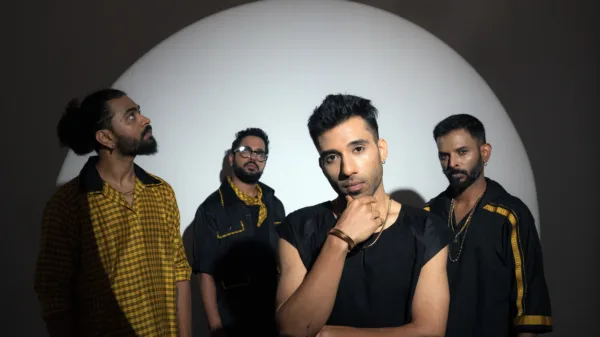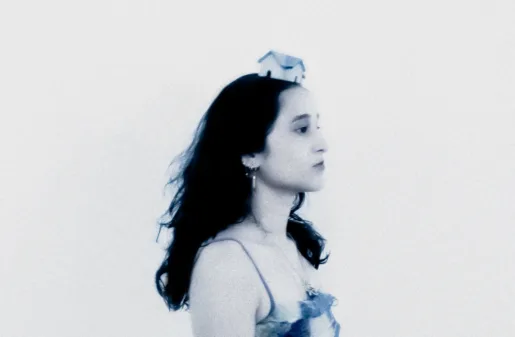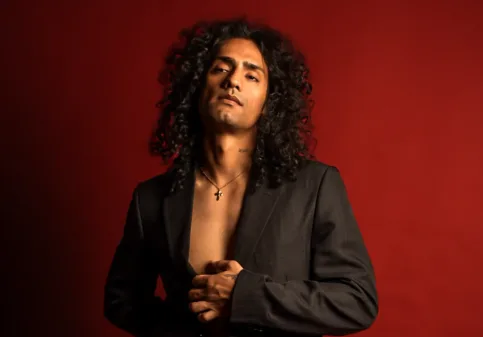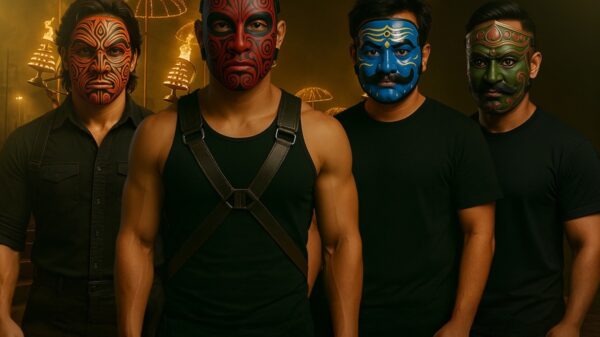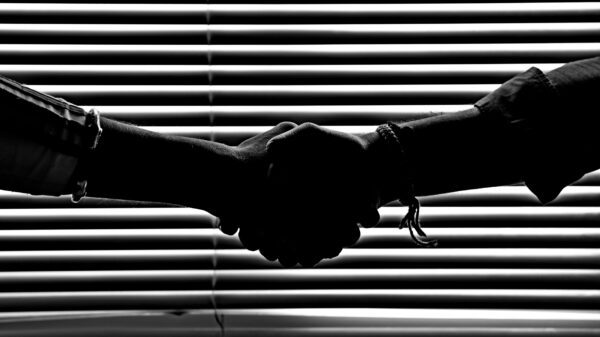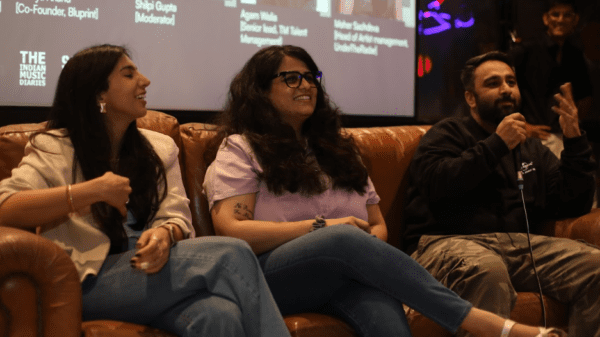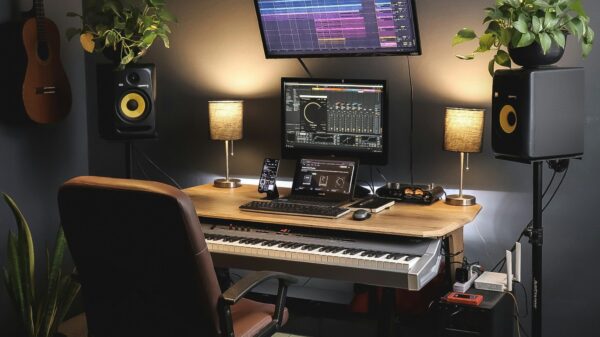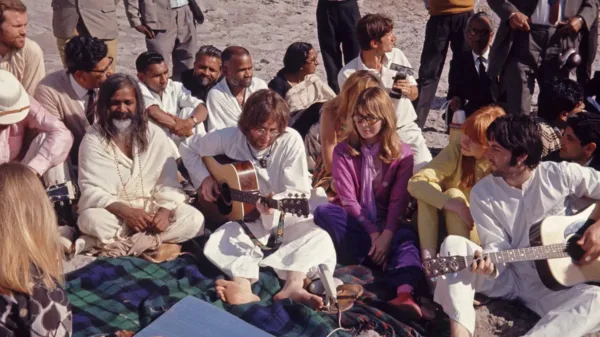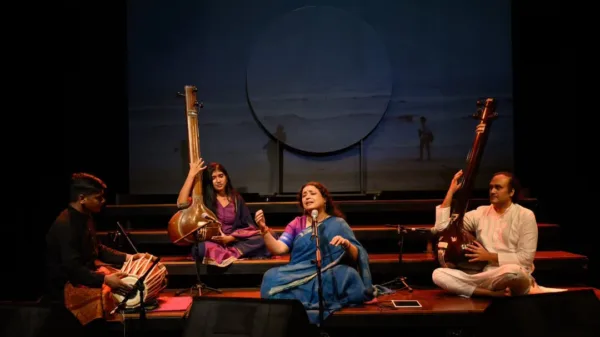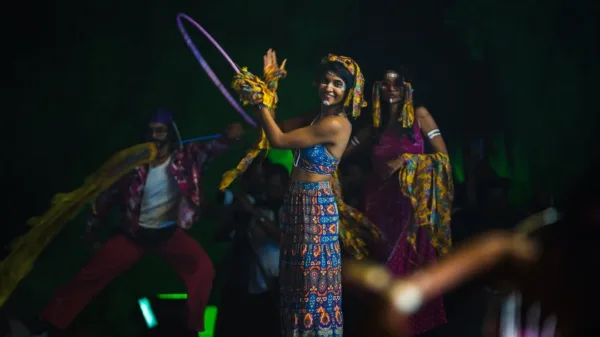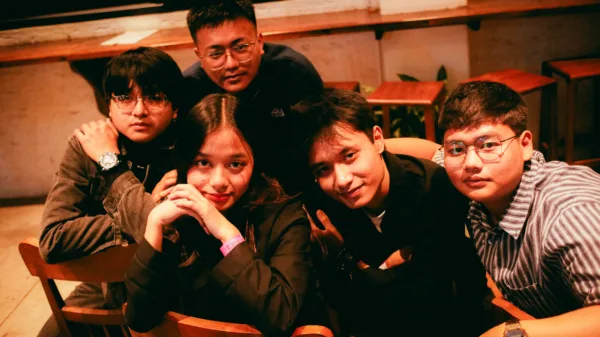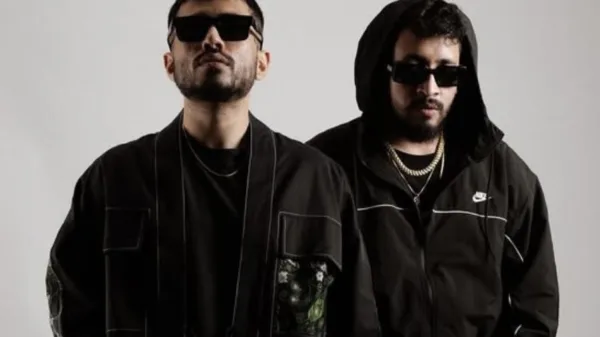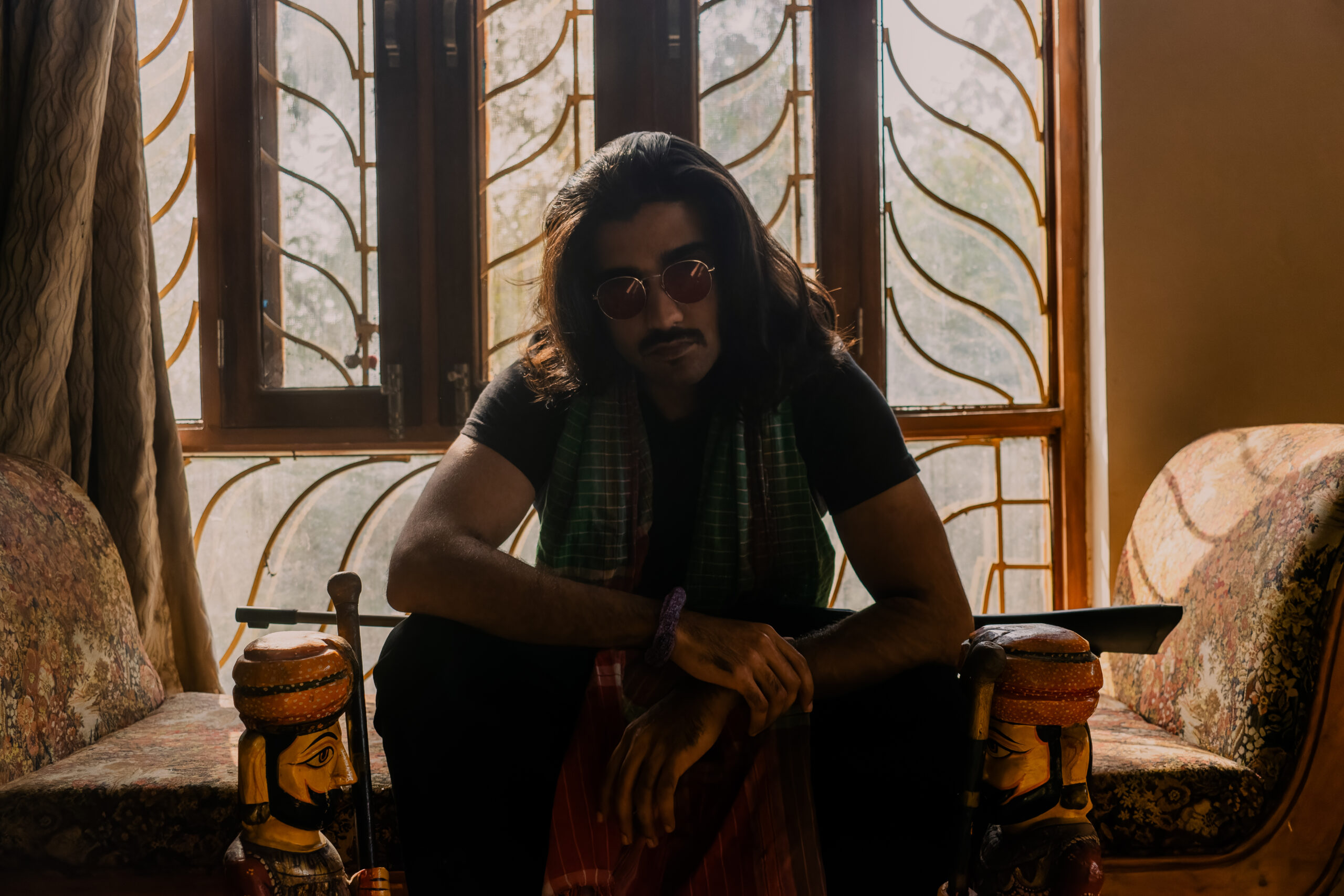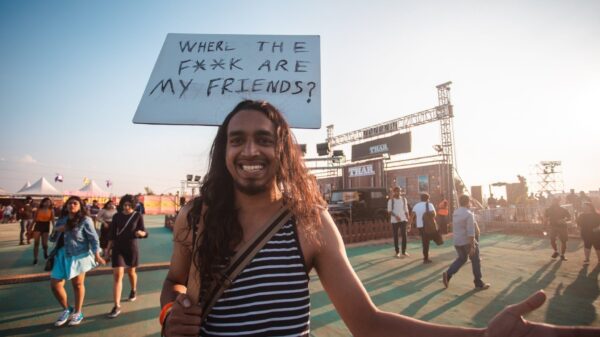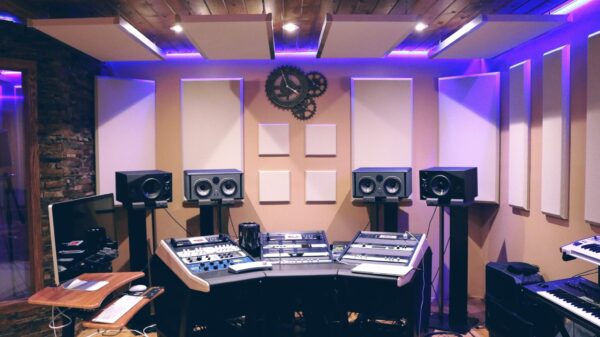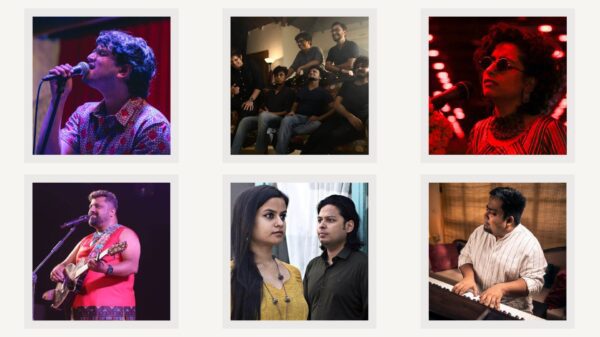22 year-old Somansh Sharma’s studio is an eclectic place — with walls adorned by a framed poster of JPEGMAFIA, eccentric art, a psychedelia inspired tapestry, and Hindi comics with names like Chandkal Ki Waapsi surrounding his equipment — it has all the characteristics of a promising artist’s den. The person who inhabits said space, Baijoo Bawra, as he is popularly known — has been making music that combines storytelling and experimental production to create an extremely specific brand of visuality that with time shall only be his own. The creator of Malaysian Vimaan, Jalsa, Ranisa, and one of the brains/voices behind the now cult-classic among Desi Hip Hop fans, Bhabhi Hunter, talks about his music origins, his process, and his upcoming album in conversation with us.
1. What drew you to choosing Baijoo Bawra as your Artist Name? Is it the movie, the mythology behind it, does the name have an influence on your musicality?
There is an interesting story behind choosing this as an artist name. I was formerly putting music out as Somansh Sharma – so, there is a lot of stuff that I have released, and will release which I would not want to be associated with the name. As for Baijoo Bawra, I have not dug into its mythology. This name was used a lot at home when I was growing up – later, I ended up seeing the movie, and found out that Tansen and him had been under the tutelage of the same guru, Swami Haridas. I find a lot of the work that I produce fits the name Baijoo Bawra — there is a comic element to it, although the real guy only had a musical background to himself. Most of my music does feature a number of comic references, and there is that aesthetic element to the name. When I was looking for an artist name, I did want to carve a cultural niche for myself. I think the change in direction from Somansh Sharma to Baijoo Bawra has been gradual, because Jalsa is very different from what I used to create, and the album has vastly different elements.
2. What drew you to the current soundscapes that you use right now? As much as your music is evolving, did you have a specific vision that you want to make this kind of music?
There was nothing of that sort. Even now, there is no certainty that I will keep making the kind of music that I am right now. When I had started, it was fun – where I would listen to a beat, make a loop that would keep repeating, and it was entertaining. Before that, when I was in school, I used to play the guitar. However when I actually got into production, I got an idea of what I wanted to do. I found sound design very interesting, and I started incorporating a lot of textures in my work, like you see in Jalsa. I do intend to include jazz and electronic elements into my music. I listen to a lot of stuff, and I try to capture certain things from them, for example, I’m listening to Domi and JD Beck right now, and their music has influenced mine.
I also have a plan to record raw sounds, like those of stones, and sticks with a field recorder, and then use those unprogrammed sounds. Anything can happen in the future, if I feel the urge to sing ghazals, I’ll go learn how to do it.
3. Do you have any specific aesthetic that you might be going for in the future, considering you do not have a music video out right now?
I do not have a music video yet, but I do have an aesthetic in mind. When I do make one, I want to use a B-Grade, low-budget Hindi movie aesthetic with something like “Shaytaani Ilaaka” written somewhere, with multiple characters here and there. There is this series called Trailer Park Boys, which was a big inspiration because I found a reflection of myself in it, like I could tell them I knew exactly what they were talking about. There’s another low-budget horror movie called Darna Zaroori Hai, directed by Ram Gopal Varma — I had great fun watching it. I want to try to capture aesthetics like that [movie’s]. Sasta, purana, aur masti.

4. How do you pick your collaborators? A consistent collaborator of yours has been Darzi, how has that played out for you?
I usually collaborate with Darzi because he understands my preferences. Our tastes align well, and when we work together, things get done quickly. It’s rare to find someone with whom I can sit and create something together.
5. Is there anyone you dream of collaborating with in the future?
If I’m allowed to pick anyone, then I’d go for Yussef Dayes, the jazz drummer. There’s Flying Lotusin the realm of sound designand when it comes to blending jazz, hip hop. I’m saying I can do it as if the opportunity is awaiting me — but yes. I really like the band Hiatus Kaiyote, and their music is mostly modern jazz. I have a leaning towards a number of jazz bands.
6. Where did this inclination towards jazz come from?
I don’t know, really. I don’t think I know how to play jazz, even a percent of it. Whatever I make, it’s based on me listening over and over again, and I don’t know if the product I end up creating can be called jazz. I had started listening to jazz a few years ago … artists like Chet Baker, Miles Davis etc. The UK Jazz community is extremely intriguing to me. Alfa Mist is one of the people in the scene, who I would like to work with in the future. There’s a lot of movement in modern jazz that I like consuming. Nowadays, I do feel the urge to learn jazz – like the guitar, or the keys — I’ll do something with it soon.
7. Bhabhi Hunter has accumulated a cult-like status when it comes to DHH. What was that experience like, how did it come about, etc?
When I met B-Leaf for the first time, I felt that women who are around the ages of 30-35 would like him a lot. I’d mentioned that very honestly to him, and that kind of sparked the idea in his head that we should make something like Bhabhi Hunter. I don’t know when it became such a phenomenon, but it did, and I think it has got the most streams right now. I could have done a lot with Bhabhi Hunter, if I were making it now I would be adding a number of other elements. I can envision a Bhabhi Hunter part 2 coming out, where we explore the continuation of the story. I’d thought of making a music video, but we can’t really do it right now, because the video would have to feature the very things you hear about on the song.
There is a lot of discourse surrounding Bhabhi Hunter, with people calling it misogynistic. I think a lot of people are attracted to people older than them. I had been told that I was talking about a housewife, but again, that is an assumption – nowhere is that mentioned in the song. I think people have taken to thinking too much about a song that is inherently sweet, and a lot of fun. It’s the title which sets people off, a little.
8. Malaysian Vimaan is one of your most interesting projects. The ideas behind its production, the vision, anything — what essentially resulted in the culmination of the track?
I was listening to a lot of drum and bass. That had kind of seeped into my work. I think that is my process, where whatever I am enjoying listening to at the moment shapes the kind of music I create — I do not set out thinking “I am going to go for this sound”. It is moreso a gradual progression. I did a lot of things with the production on that song which I do not usually do. I’d sat down with Darzi and worked on the song, and invested a lot into the lyrics.The sound on that track is very textural, and I’d been listening to a lot of JPEGMAFIA back then, so the flow had also kind of translated into it.
9. Rani-sa is the name of your newest single. It is also the name of the tour/yatra that you have organized three legs of, where you took fans along to the mountains. Is this a consistent motif, if so, what is its significance?
Rani-sa is a part of the upcoming Baijnath album. Rani-sa follows the story of this king who leaves his homeland, goes to new villages, cities etc. plundering homes with his army. The album is a collection of stories, with a particular one connecting all the others together. He then rebuilds these places, pretending that they are his home. The Yatra was a separate thing.
10. How did the Rani-sa Yatra come about? How has that experience been?
It was more spontaneous than you think. Zavi had called me, saying that we should go somewhere and do something. The yatra has happened twice before this one. I have been on it the last two times. The experience is pretty great, the yatra brings different aspects of art and culture to the events by having artist from different mediums and genres on the lineup, in the hope of making a very unique experience for the audience. I had performed Baijnath the second time, the first time was in March at Pune, and the second in April at Mcleodganj. I was very excited to do it, and the people were too. However, there was an element of a culture shock for the people at Dharamsala, and even Pune — because the album is based on Noida, on things happening in Noida.

11. What locations do you see yourself performing in later?
I want to perform at a lot of far-off places. I want to go to Ladakh and perform. I also want to visit the Northeast. The madness, the B-gradeness that this album also has — I want to travel to these distant corners and perform my music there. Perhaps a village in Greater Noida, or maybe I shall take people to a forest and we shall have a collective experience there.
12. Tell us about your upcoming album, Baijnaath.
Baijnaath is our protagonist, he is a really balanced person. However, there is this conflict within him — he has this “crook” persona too. There are a lot of people around him, some are good, some are bad. Recounting thebizarrestories of those around him. The album has been in the works for almost a year and a half. I have added and removed tracks over time, I have learned new things. I focus on both lyrics and production. Firstly, I take on production. Lyrics are very important to me. Writing becomes very boring for me if I keep writing about the same stuff. I only find it interesting when I am talking about my kind of stuff.For me, I think it is necessary for the madness to get an outlet. Today, I am making music, tomorrow I might go and take an exam for a government job, I might get training for the military. As I said, it is more about the outlet for me.
Baijnaath, the album, hits all streaming platforms soon.
